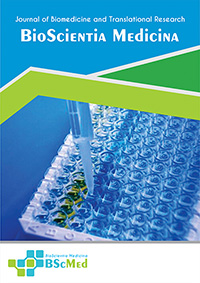Main Article Content
Abstract
Background: Shrinking lung syndrome (SLS) is a rare but significant pleuropulmonary complication of systemic autoimmune diseases, primarily systemic lupus erythematosus (SLE). Early and accurate diagnosis is crucial for timely intervention, but often challenging due to the insidious onset and overlapping symptoms with other respiratory conditions. This meta-analysis aims to synthesize the existing evidence on the diagnostic performance of various PFT parameters in identifying SLS.
Methods: We conducted a systematic search of PubMed, Embase, Scopus, and Web of Science databases from January 2013 to May 2024. We included studies that reported the diagnostic accuracy of PFTs (specifically, total lung capacity [TLC], forced vital capacity [FVC], diffusing capacity for carbon monoxide [DLCO], and maximal inspiratory pressure [MIP]) in differentiating SLS from other respiratory conditions or healthy controls in patients with systemic autoimmune diseases. Heterogeneity was assessed using the I² statistic.
Results: Nine studies, comprising a total of 685 patients with systemic autoimmune diseases (215 with SLS and 470 without SLS), were included. The pooled sensitivity and specificity of TLC ≤ 80% predicted for diagnosing SLS were 0.85 (95% CI, 0.78-0.90) and 0.72 (95% CI, 0.63-0.80), respectively. For FVC ≤ 80% predicted, the pooled sensitivity and specificity were 0.78 (95% CI, 0.69-0.85) and 0.65 (95% CI, 0.55-0.74), respectively. DLCO showed lower sensitivity (0.68; 95% CI, 0.57-0.77) but higher specificity (0.80; 95% CI, 0.71-0.87). MIP demonstrated a sensitivity of 0.75 (95% CI: 0.61, 0.85) and a specificity of 0.60 (95% CI: 0.44, 0.74). Significant heterogeneity was observed across studies (I² > 50% for most analyses).
Conclusion: PFTs, particularly TLC, are valuable tools in the diagnostic workup of SLS. While TLC demonstrates good sensitivity, its moderate specificity necessitates a comprehensive evaluation, integrating clinical findings, imaging, and potentially other biomarkers.
Keywords
Article Details
As our aim is to disseminate original research article, hence the publishing right is a necessary one. The publishing right is needed in order to reach the agreement between the author and publisher. As the journal is fully open access, the authors will sign an exclusive license agreement.
The authors have the right to:
- Share their article in the same ways permitted to third parties under the relevant user license.
- Retain copyright, patent, trademark and other intellectual property rights including research data.
- Proper attribution and credit for the published work.
For the open access article, the publisher is granted to the following right.
- The non-exclusive right to publish the article and grant right to others.
- For the published article, the publisher applied for the Creative Commons Attribution-NonCommercial-ShareAlike 4.0 International License.





